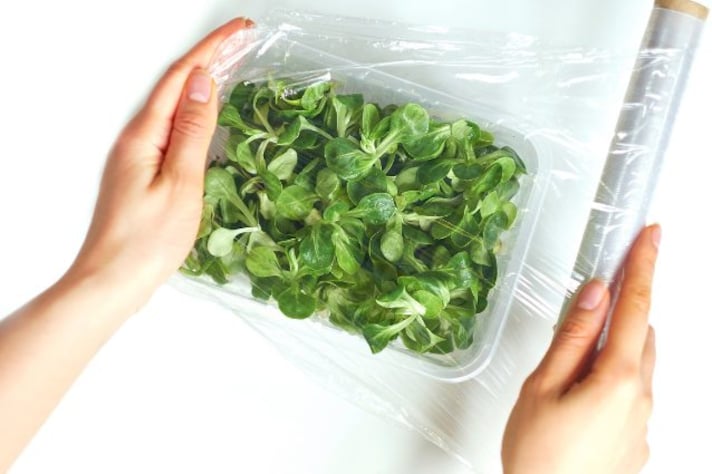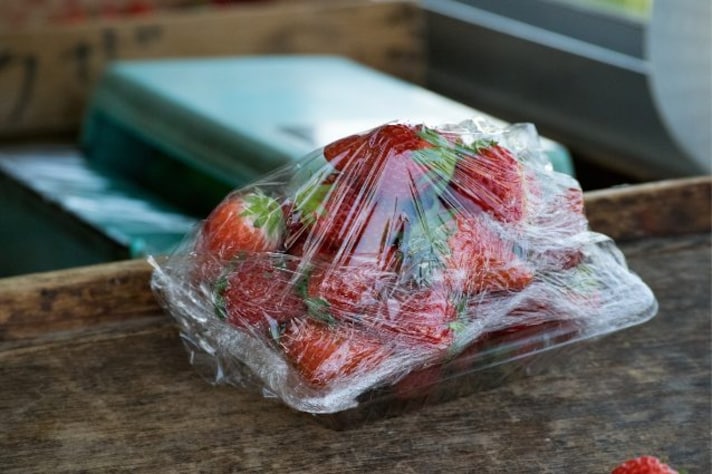Why You Should Never Wrap Produce Using Plastic Wrap
Wrapping produce in plastic traps moisture and gases, speeding up spoilage and dulling flavor. Vegetables like leafy greens turn slimy, while fruits like apples ripen too fast. To store produce properly, use breathable materials like damp towels, beeswax wraps, or glass containers to keep it fresh and flavorful without harming the environment.

We’ve all done it. You bring home fresh fruits and vegetables, thinking you’re preserving them for the long haul, only to wrap them snugly in plastic wrap and toss them into the fridge. It seems like a no-brainer, right? After all, sealing your produce tightly should keep it fresh. But here’s the catch: that trusty plastic wrap might be doing more harm than good. In fact, when it comes to your fruits and veggies, wrapping them in plastic could be shortening their shelf life and even affecting their flavor and texture. So, what gives? Let’s unravel the mystery of why plastic wrap and produce don’t mix.
Plastic Wrap Suffocates Your Produce
The main issue with plastic wrap is that it’s an airtight material. Fruits and vegetables are still alive even after they’ve been harvested, which means they continue to respire, releasing moisture and gases like ethylene. When you wrap produce in plastic, you essentially suffocate it, trapping these gases and moisture. This can lead to premature spoilage, as the trapped moisture encourages mold growth, while the ethylene gas speeds up ripening and, ultimately, decay.
For instance, ever notice how wrapping cucumbers or leafy greens in plastic leaves them limp and slimy in no time? That’s the result of excess moisture getting trapped, turning your once-crisp produce into a soggy mess. Fruits like apples and bananas, on the other hand, emit ethylene gas, which accelerates ripening—and when trapped in plastic, it’s like putting the ripening process on overdrive.

Plastic Wrap Creates a Stale Environment for Flavor
Beyond the physical changes, plastic wrap can also affect the flavor and texture of your produce. When fruits and vegetables are deprived of airflow, they can become stale more quickly. This lack of ventilation not only encourages decay but also dulls the vibrant flavors that make fresh produce so enjoyable.
Think of berries, for example. While they might look pristine when wrapped in plastic, their flavor quickly diminishes as the fruit softens and ferments in its airtight cocoon. Tomatoes, which are particularly sensitive to their environment, can also lose their rich, robust taste when suffocated in plastic. Instead of ripening naturally and sweetening over time, they end up with a mealy texture and muted flavor, making that next Caprese salad a bit of a disappointment.
Plastic Isn’t Just Bad for Your Produce
It’s no secret that plastic wrap is a single-use product that adds to the growing plastic waste problem. Every time you wrap your veggies or fruit in plastic, you're contributing to the larger issue of non-recyclable waste that ends up in landfills. While the focus here is on preserving the quality of your produce, it’s worth noting that using plastic wrap also carries environmental consequences that go beyond the kitchen.

By reducing your reliance on plastic wrap, you’re not only giving your produce a longer, tastier life—you’re also doing your part to cut down on plastic waste. And with so many sustainable storage alternatives available, it’s easier than ever to make the switch.
How to Store Produce for the Best Results
So, if plastic wrap isn’t the answer, how should you store your produce to keep it fresh? The best method depends on the type of fruit or vegetable. For leafy greens, wrap them in a slightly damp towel and store them in a breathable container to maintain moisture without suffocating them. Root vegetables, like carrots and potatoes, do well in a cool, dark place rather than the fridge. For fruits that produce ethylene gas, like apples or bananas, keep them in a cool spot but away from other produce to avoid speeding up the ripening process.
If you’re looking for an eco-friendly alternative to plastic wrap, consider beeswax wraps or silicone bags. These options provide enough airflow to keep your produce fresh while still offering some protection. Glass containers are also a great choice, especially for storing cut fruits and vegetables, as they don’t trap moisture or affect flavor.
;Resize,width=767;)



